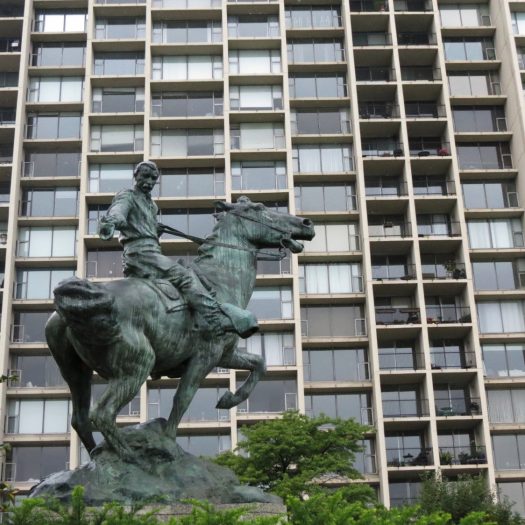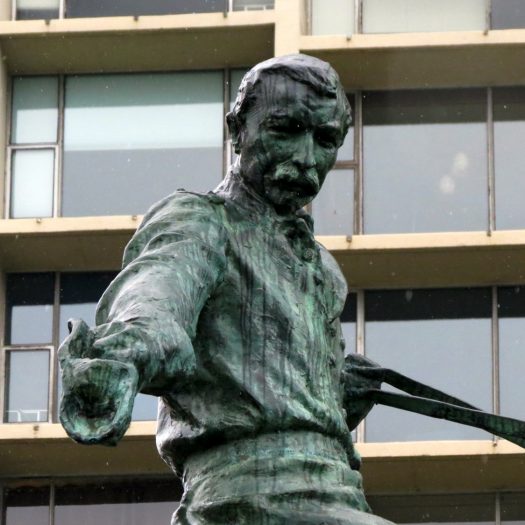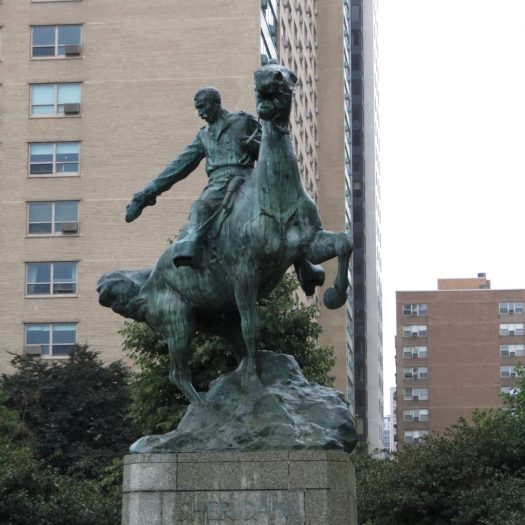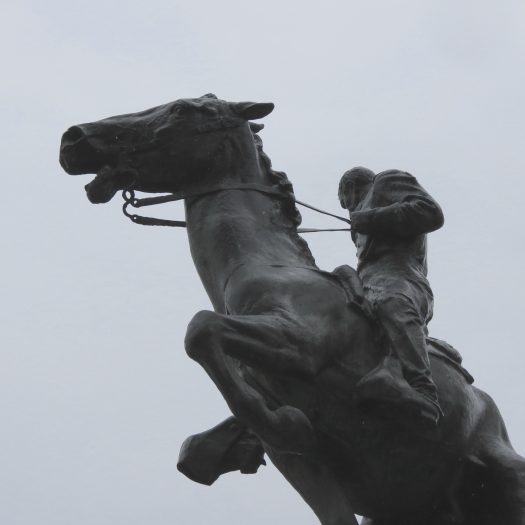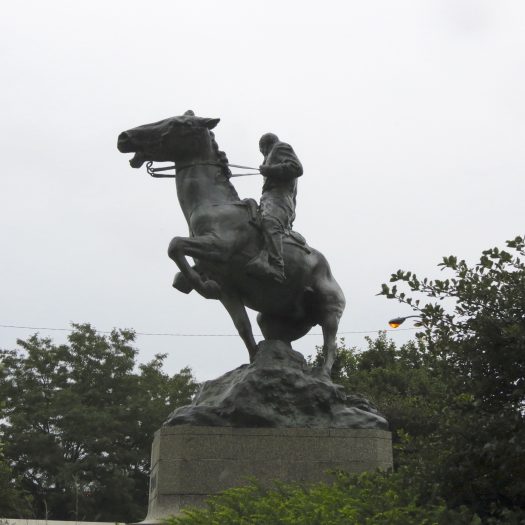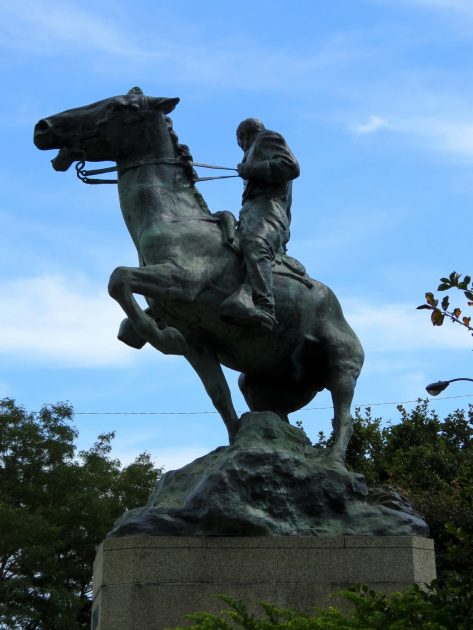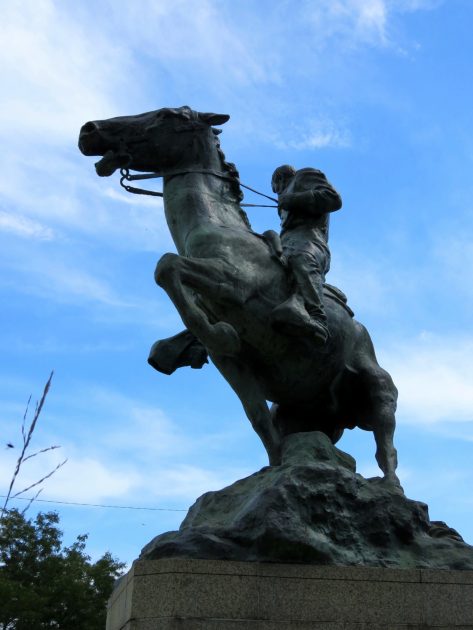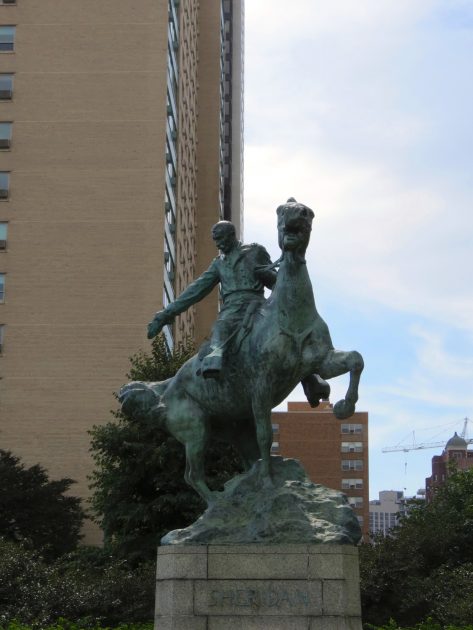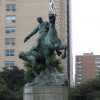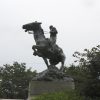Standing at the beginning of Chicago’s Sheridan Road in Lincoln Park, this statue looks more like a rodeo cowboy on a horse than a Civil War general. When you look at the monument, do you think that the horse played an important role in Sheridan’s life and in the Civil War? The sculptor, Gutzon Borglum, portrayed Sheridan’s horse with his mouth open, his hind legs bent, a front leg raised, and his tail curving upwards.
Originally named “Rienzi,” the horse was given to Sheridan by a fellow officer in 1862. Two years later, General Sheridan was the commander of the Cavalry Corps of the Army of the Potomoc in Virginia. On October 19, 1864, when away from his troops briefly, he heard the sounds of cannon firing in the distance. He quickly rode to Cedar Creek, where his men were defending against a surprise Confederate attack. This monument shows Sheridan looking over his shoulder, arm outstretched and hat in hand, rallying his troops to regain control of the battleground. His ultimate victory at the battle was so significant to Sheridan that he changed his horse’s name to “Winchester,” in honor of the town nearest the fight. After “Winchester” died in 1878, the horse’s body was preserved and presented by Sheridan to a military museum in New York. It is now part of the collections of the Smithsonian Institution.
